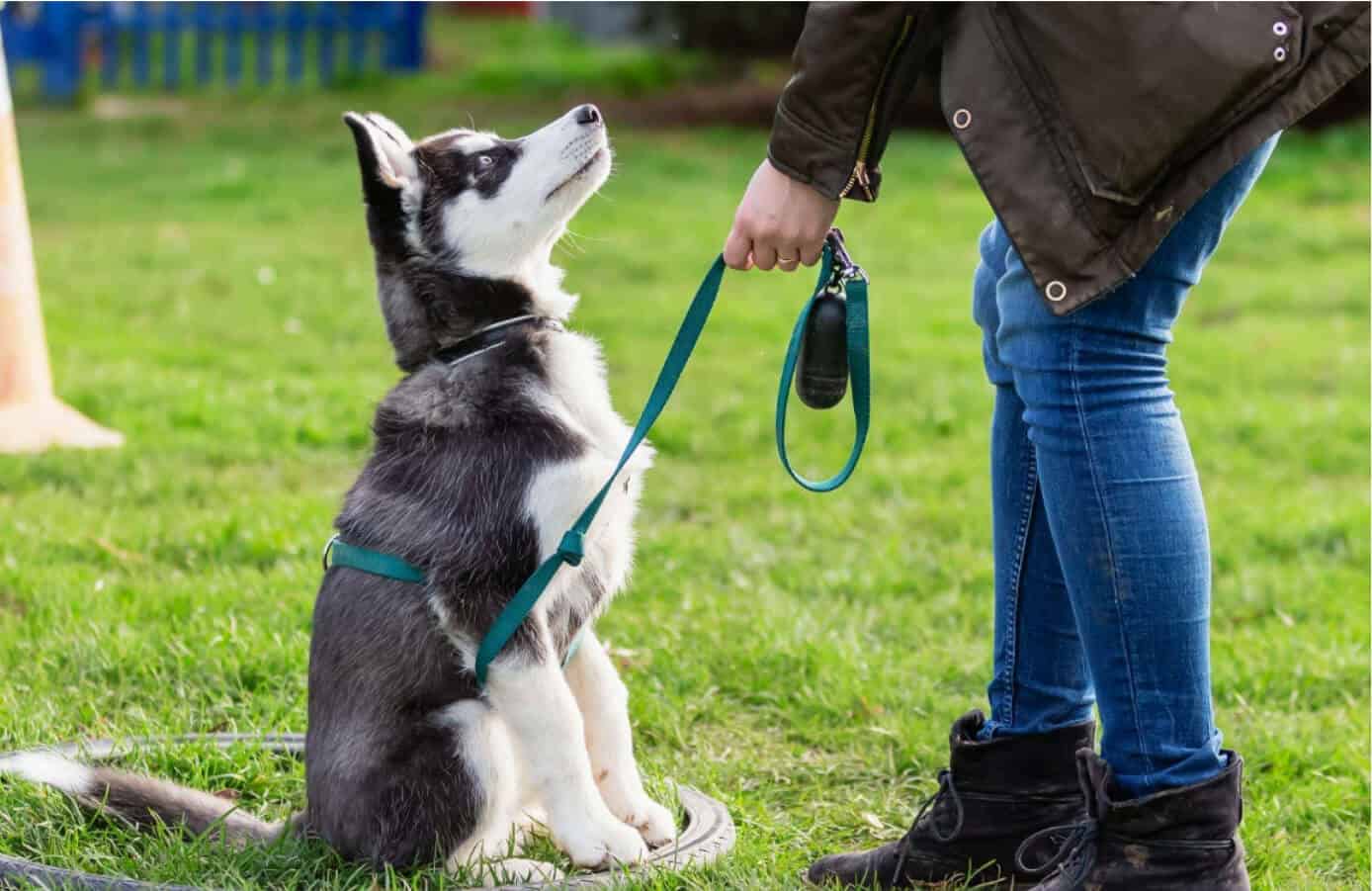Master Important Commands: Efficient Dog Educating Facilitated
Effective dog training is a fundamental aspect of responsible animal ownership, and grasping essential commands offers as the structure for a harmonious relationship in between handler and pet. Understanding the subtleties of canine behavior and the training process is essential; nonetheless, the trip to a well-trained dog usually presents unanticipated hurdles that call for attention.
Comprehending Your Dog's Habits
To grasp the nuances of reliable pet training, it is necessary to break down and evaluate your pet's behavior. Dog training. Comprehending the inspirations behind your canine's activities is critical; behaviors can come from reaction, worry, enjoyment, or a need for attention. By observing your canine in numerous scenarios, you can identify patterns that may suggest underlying feelings or needs
For example, a pet dog that barks exceedingly might be expressing boredom, stress and anxiety, or a demand for social communication. Conversely, a canine that displays devastating behaviors could be seeking stimulation or remedy for stress and anxiety. Recognizing these triggers allows you to tailor your training method successfully.
In addition, it is essential to take into consideration the dog's breed qualities, as they can influence habits substantially. Some types are inclined to specific traits, such as herding or protecting impulses, which can impact their responses to particular stimulations.
Last but not least, uniformity in your feedbacks to your dog's behavior promotes a far better understanding between you and your animal. This common comprehension is foundational for building trust and assisting in a reliable training procedure that supports both behavioral correction and favorable support.
Necessary Commands to Instruct
Instructing important commands is a fundamental facet of efficient canine training, providing the structure for a mannerly and receptive family pet. These commands not only enhance communication in between the owner and the dog however additionally make sure safety and security in different environments.
One of the most critical commands include "Sit," which urges your pet dog to remain fixed and calm; "Keep," which reinforces the concept of staying in one place up until released; and "Come," which is essential for recalling your dog from possibly harmful scenarios. "Down" shows pet dogs to exist down, promoting leisure and control, while "Leave it" helps stop dogs from selecting up damaging or undesirable products.
" Heel" is an additional essential command that urges your canine to stroll closely next to you, improving leash good manners. "No" offers as a critical boundary-setting command, assisting to deal with undesirable habits.
Training Techniques for Success
Efficient pet training depends greatly on utilizing a selection of techniques that deal with both the pet's knowing design and the proprietor's training goals. One crucial approach declares reinforcement, which entails satisfying wanted behaviors with deals with, appreciation, or play. This method motivates the dog to duplicate those actions, cultivating a strong bond between owner and pet dog.

Another effective technique is clicker training, where a distinct audio, made by a remote control, notes the precise moment a canine performs a wanted activity. This exact timing assists pet this dogs connect the actions with the benefit, improving their understanding.
Consistency is critical in all training techniques. Developing clear commands and preserving the same signs assists the canine grasp assumptions much more rapidly. In addition, brief, engaging training sessions protect against monotony and increase retention.
Including socializing opportunities is also crucial. Subjecting pets to different environments, individuals, and other pets helps them create confidence and flexibility.
Finally, patience plays a substantial function in effective training - Dog training. Each pet dog learns at their own rate, and comprehending this can lead to an extra pleasurable training experience for both the proprietor and the canine. Applying these methods will certainly set the structure for effective pet dog training
Common Difficulties and Solutions
In spite of the most effective training techniques, pet dog proprietors often experience typical difficulties that can prevent progress. One prevalent issue is disparity in commands and hints. When member of the family make use of various commands for the same behavior, it confuses the pet dog, causing irregular responses. The service hinges on establishing a unified technique amongst all relative, making certain that everyone uses the same terminology and signals.

In addition, some canines might exhibit stubbornness or lack inspiration. This can frequently be resolved by integrating favorable reinforcement methods, such as deals with or praise, to urge desired habits. Customizing benefits to what your pet dog finds most inspiring can considerably boost their engagement.
Last but not least, worry or anxiousness can hinder progression in training. Acknowledging indicators of tension and readjusting the training pace as necessary is essential. Using gradual direct exposure to been afraid stimuli can aid build self-confidence over time, assisting in a more reliable training experience.
Maintaining Uniformity and Perseverance
Consistency and persistence are vital in pet training, as they create the structure for attaining enduring behavior modifications. Pet dogs flourish on routine and clear expectations; thus, maintaining a consistent approach in commands, rewards, and adjustments is vital.
Similarly essential is the function of perseverance. Educating a dog is not an immediate process; it needs time and rep. Pet dogs, just like human like this beings, have varying discovering rates and might not understand commands promptly. Fitness instructors must identify this and stay tranquil, supplying motivation instead of stress. Positive reinforcement plays a vital function here, satisfying desired actions and helping to cultivate a trusting partnership between the pet and fitness instructor.
Verdict
Understanding important commands is basic to efficient dog training, cultivating enhanced interaction and reinforcing favorable actions. The application of favorable reinforcement methods, coupled with uniformity and patience, significantly improves the training experience for both the canine and handler. Attending to common obstacles with useful remedies further supports the training procedure. Ultimately, a well-trained pet dog not only displays excellent behavior however additionally develops confidence, adding to a harmonious connection between the pet dog and its owner.